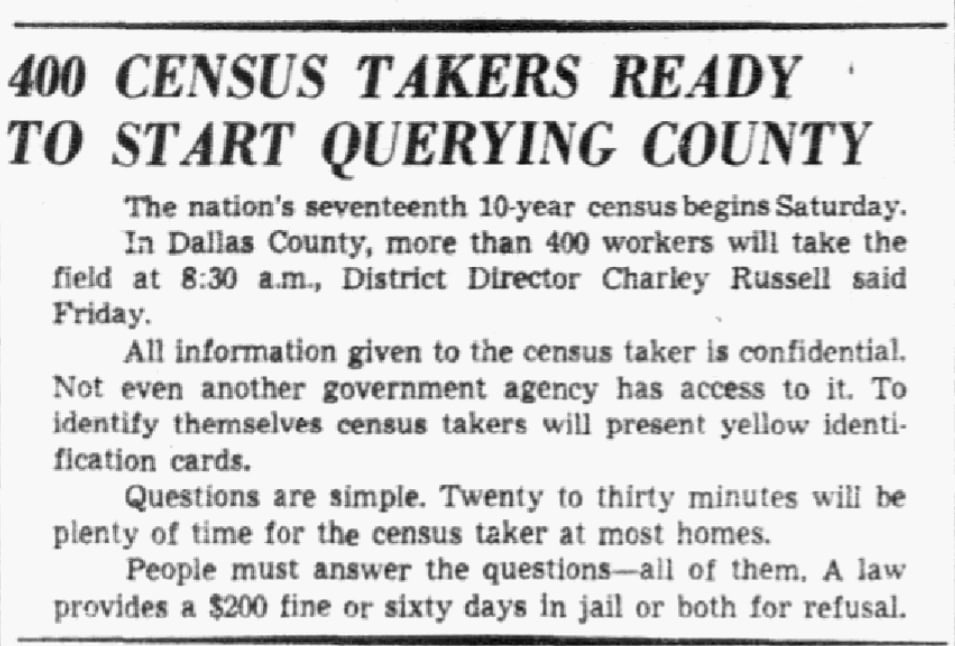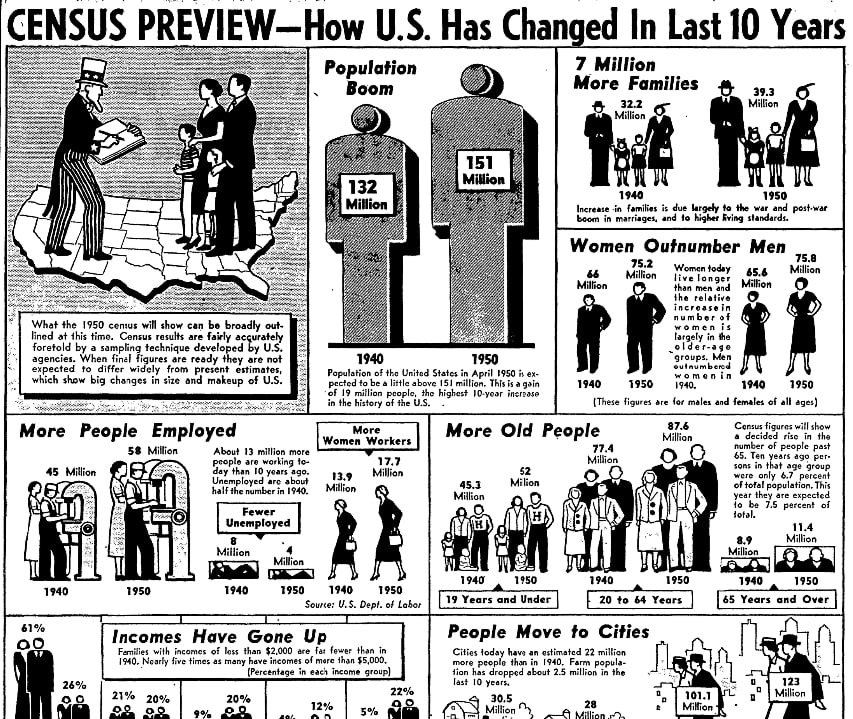Introduction: In this article, Gena Philibert-Ortega gives tips to prepare for the release of the next U.S. Census being made available: the 1950 census. Gena is a genealogist and author of the book “From the Family Kitchen.”
We are less than 12 months away from the release of the 1950 United States Census. Are you ready? Although we have almost a year to wait, there are things you can do now to prepare for April 2022. Here are four things to consider as we patiently wait to see the 1950 census.

It’s Ready! But Not Searchable
The National Archives will release the census on 1 April 2022 as digital images, but they will not be indexed. It will take time to create an index and transcribe that information – which means that even if your favorite website uploads the images quickly, you won’t be able to search those images by name at first.
Online providers will prioritize which locations to index first, so you may have to wait awhile for your ancestor’s small town to be indexed. That doesn’t mean all hope is lost for your April 2022 research plans. You will be able to browse images, and if you know the enumeration district you might be able to find your ancestors.

Using Enumeration Districts Instead of an Ancestor’s Name
When we can’t search a census by name on a website, our next step is to use the enumeration district to find our ancestor. To do this, you’ll need your ancestor’s street address. How do you get their address? Various records and home sources provide this, including the previous census (if they are still living at that address), city directories, and newspaper articles such as those in GenealogyBank’s Historical Newspaper Archives.
Once you find their address, you can find their enumeration district. What is the enumeration district? According to Stephen P. Morse:
“Within each state the EDs are numbered uniquely. That number consists of two parts. The first part specifies a region within the state. The region is usually a county but it could be a large city. The second part specifies a district within the region. Once you have the ED number, you will be able to successfully research the 1950 census pages when they become public.”*
Stephen P. Morse’s website provides the tools you need for finding your ancestor’s enumeration district number. Be sure to read his article about Getting Ready for the 1950 Census to learn more about using these tools.
What’s on the 1950 Census?
There’s good news and bad news. The 1950 census is similar to the 1940 census. In fact, the extra information that a sample population was asked on the 1940 census returns on the 1950 census (6 names per page). In my opinion, the bad news is that one of the best parts of the 1940 census, the symbol that indicates the informant for a household (that x enclosed in a circle), is not found in the 1950 census. This means that, like other census years, we won’t be able to judge the accuracy of the information since we don’t know who provided that information.
Curious what questions were asked on the 1950 census? You can see a copy of the form on the Census Bureau website here. You can also learn more about that form by reading the enumerator’s instructions. Those are also available from the Census Bureau website here. I would suggest taking time to read those instructions so that you can fully understand the census and what it says about your family in 1950. The instructions for 1950 even include what people were not to be enumerated.
Genealogy Tip: Enumerator’s instructions have varied from decade to decade, and understanding the specific instructions for each census can help you decipher information found (and not found) on each census. Each decade’s instructions are available on the Census Bureau website here.
The Wait Is (Almost) Over
I remember the excitement of previous census releases, and that excitement is starting to build for the 1950 census. Finally, we will be able to find that one family member we’ve been looking for in the census. Who are you looking for? This census release will mark the first time my parents appear in the census, and I’m interested to see what their families looked like at that moment in time. For genealogists, a new census release means new possibilities for learning more about our families.
* “How to Access the 1950 Census in One Step,” One-Step Webpages by Stephen P. Morse (https://stevemorse.org/census/quiz1950.php: accessed 21 April 2021).
Related Articles:

Very nice article! I just wish that the census would come out earlier. I’m afraid I will never get to see me in the census. I know it’s for privacy, but with all our info out there on the internet these days I think this policy should be reviewed. I think 50 years is more appropriate.
Thanks for the information. Do you know if military personnel stationed abroad were included on the 1950 census?
Wondering why we have to wait 72 years for a census to be available. I was born in 1942 and by the time I can see my family (meaning me) in the 1950 census, I’ll be 80. EIGHTY!!! Good grief, how much can I accomplish in my genealogy now? Seems kind of senseless at this point. Then I cannot check on my family in years after the 40s. None of my younger siblings show. Not too accommodating, I would venture to say.
Is there a viable reason for this???
Thanks for any pertinent information you can help with. Just seems crazy.
I agree with you, I also was born in 1942.
The 72-year delay in releasing the census date was set by a law passed in 1978. It probably was based on the average lifetime of individuals at that time. Of course privacy issues come into play as well. It is possible in some cases for limited information to be released. My father’s official birth record was destroyed in a fire. He needed proof of age for retirement. He made an application to the Department of Commerce and it was granted. Of course the census at the time of his birth did not give the exact date of birth so this was backed up by a family Bible handwritten record and a certified letter from an aunt. He got what he needed.
Obituaries can be an extremely useful way of tracking down family. A well written obit can give the place to start in finding links to distant members of your family. Use GenealogyBank frequently and even Google your surnames with a year. You might find what you need. If you want to be a real hero to some future genealogist, write your own draft obituary leaving blank spaces as needed to allow for the most accurate record you can.